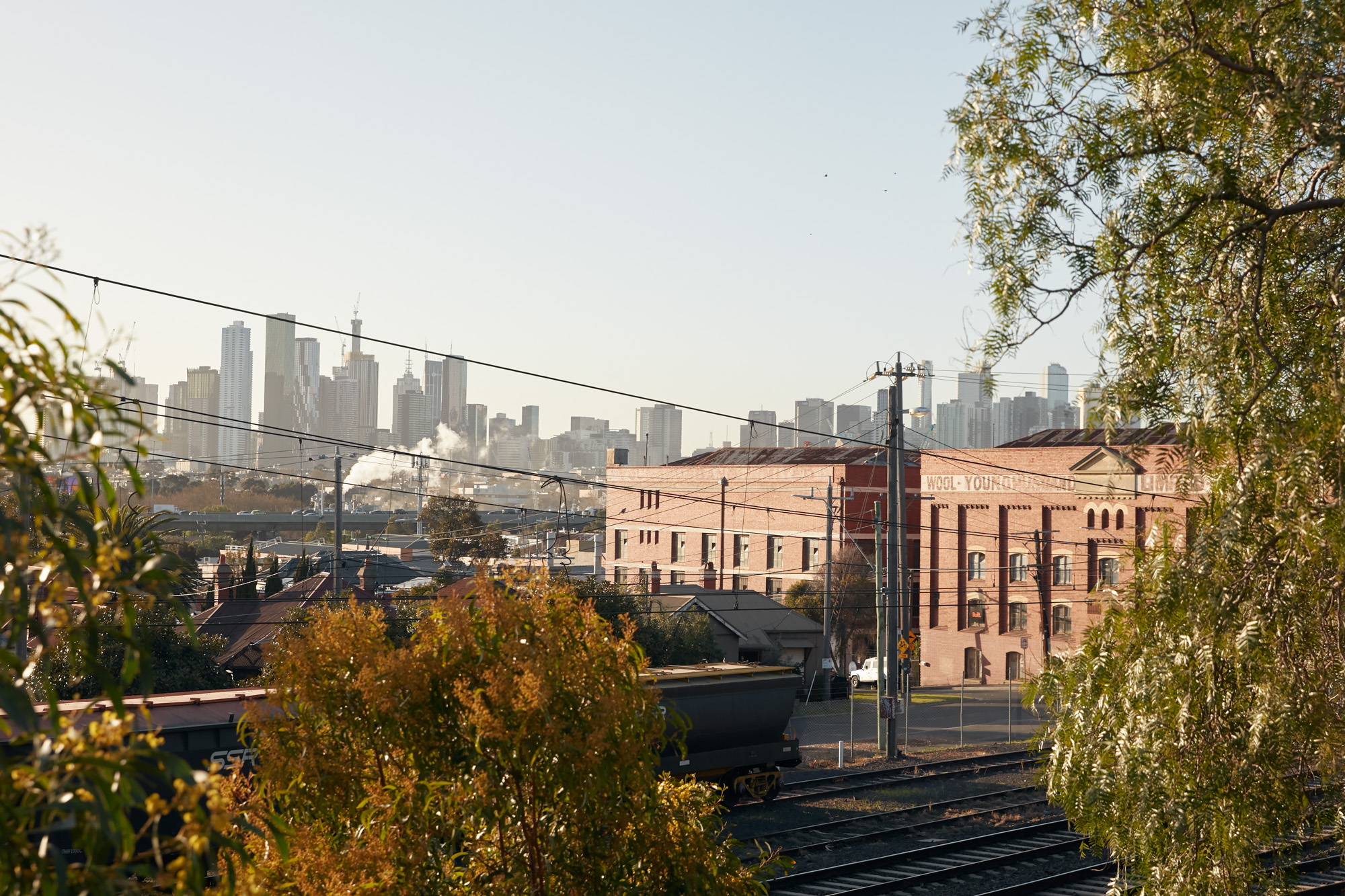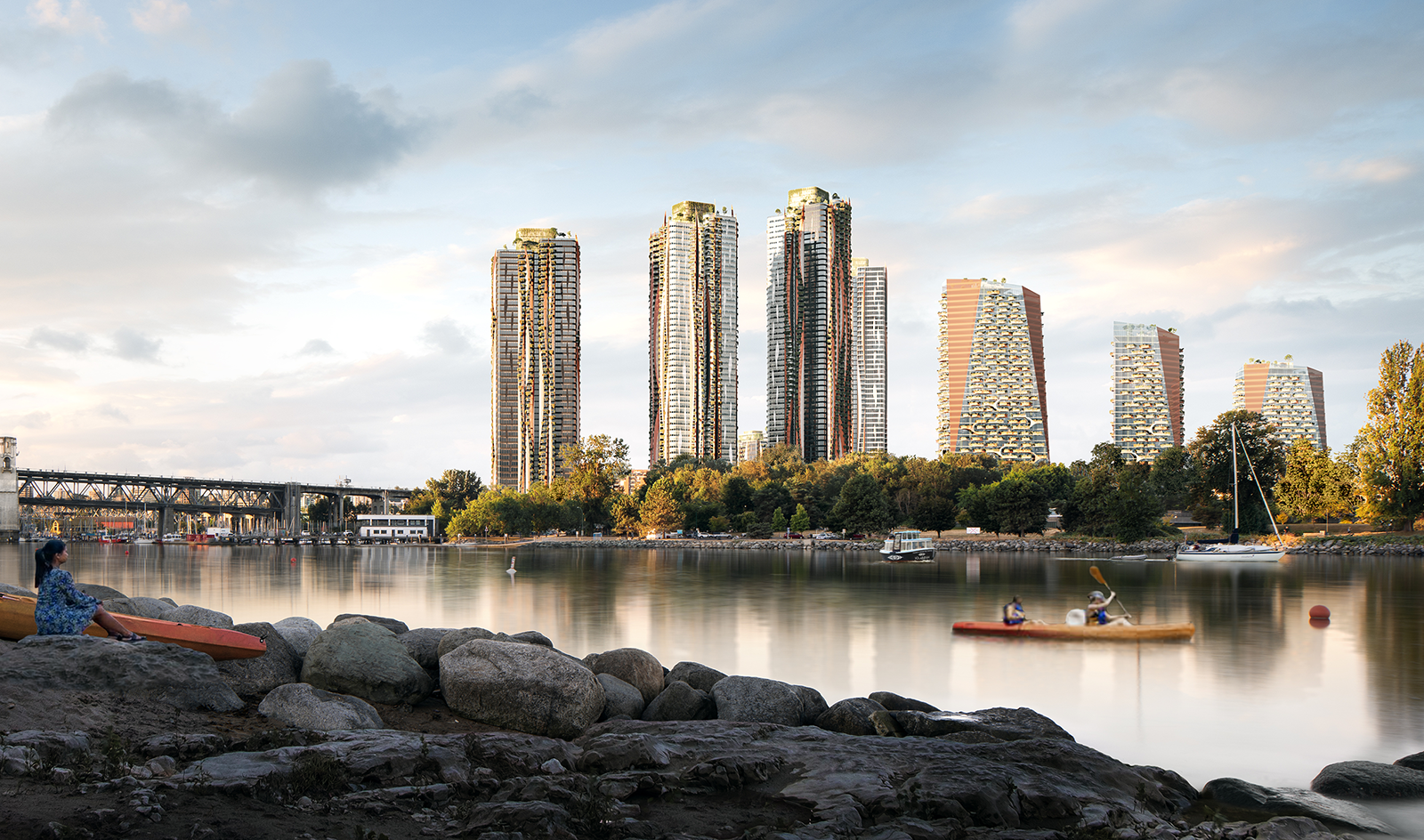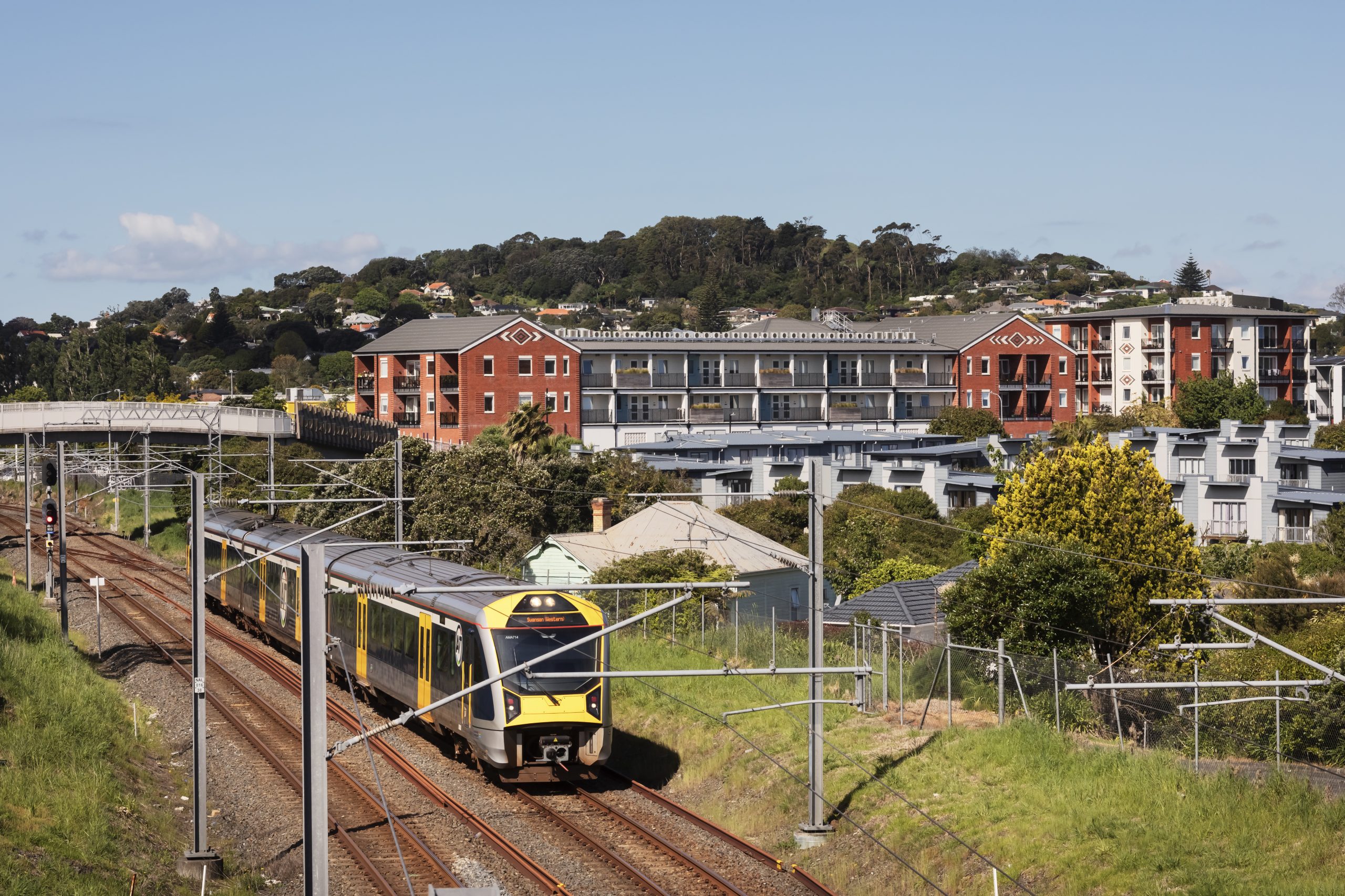Designers Elisapeta Heta, Jade Kake and Raukura Turei on Kaupapa Māori design for climate
References
An Indigenous framework is different from Western approaches to environmental practice. Concepts such as climate resilience and sustainability are embedded within a history of colonial greenwashing and extractionism, and are not Indigenous in thinking or origin. At the same time, changing climate patterns and the increasing frequency and severity of weather events are affecting Indigenous communities more than ever.
Māori in Aotearoa New Zealand are disproportionately impacted by climate change, partly because of socio-economic inequities and the characteristics of the land on which they live. You can trace these impacts to colonial land policies that facilitated the confiscation and alienation of the most fertile land in the best locations, leaving tangata whenua (the people of the land) with the land least resilient to climate events.
At the forefront of architectural design in Aotearoa are three wāhine Māori: Elisapeta Heta (Ngāti Wai and Waikato Tainui), Kaihautū Whaihanga or principal at Jasmax1; Jade Kake (Ngāpuhi, Te Whakatōhea and Ngāti Whakaue), director at Matakohe Architecture + Urbanism2 ; and Raukura Turei (Ngāi Tai ki Tāmaki, Ngāti Pāoa and Ngā Rauru Kītahi), principal at Monk McKenzie3. Many Māori consider the whenua (land) to be part of Papatūānuku, the earth mother. Wāhine (women) have an intimate connection with the whenua and Papatūānuku, as the whenua also means placenta. Some of the strongest advocates for Papatūānuku are and have been wāhine Māori. A Māori person and iwi (tribe) or hapū (sub-tribe) can also consider themselves as one with the land – ‘I am the land, the land is me’. This perspective has led to the legal personification of maunga (mountains) and awa (rivers) in Aotearoa.4 In seeking climate solutions for future generations, listening, learning from, and interweaving Indigenous architectural design practices is critical.
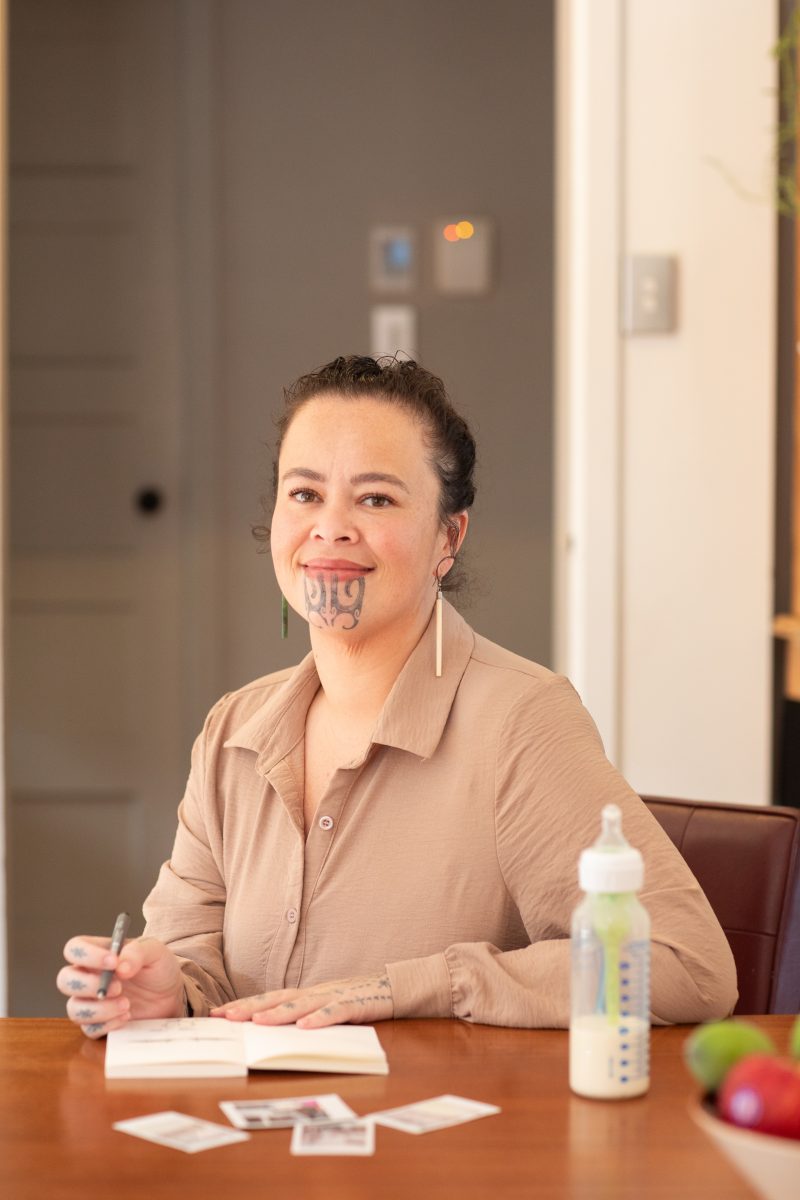


Maori approach to climate-resilient architecture with (clockwise from top left) Elisapeta Heta (Ngāti Wai and Waikato Tainui), Kaihautū Whaihanga or principal at JasmaxJade Kake (Ngāpuhi, Te Whakatōhea and Ngāti Whakaue), director at Matakohe Architecture + Urbanism, and Raukura Turei (Ngāi Tai ki Tāmaki, Ngāti Pāoa and Ngā Rauru Kītahi) Images: Sara Tautuku Orme.
Defining Climate Resilience Through a Kaupapa Māori Worldview
Kaupapa Māori is a process-orientated approach informed by tikanga Māori, a Māori way of doing things. How the design process occurs from the beginning of a project determines whether that approach is Kaupapa Māori or otherwise. For Raukura Turei, a Kaupapa Māori approach to architectural design practices for climate resilience does not relate to or use the terms ‘eco-friendly’, ‘sustainable’ or ‘environmentally friendly’ so often used in Western environmental practice.
Elisapeta Heta notes that climate resilience “is a Pākehā term with a specific meaning, whereas kaitiakitanga is a better way of looking at it.” Projects focusing on kaitiakitanga (guardianship) rather than climate resilience offer a more holistic approach, such as understanding people as part of the land instead of excluding them from it in pursuing environmental goals. Connected relationships with the natural world were also the subject of Elisapeta’s talk at a UIA Indigenous Peoples Work Programme conference in Copenhagen in 2023. “Often, Indigenous peoples don’t think about Te Taiao as something separate from us.”
“We have relationships with the natural world, and our rivers have gained personhood. I will talk about my maunga as an ancestor. That’s the best way I can describe kaitiakitanga.”
Built projects focusing on kaitiakitanga adopt an understanding that all life is connected and that we are not superior to the environment. For example, tribal groupings that respond to environmental problems may be considered the kaitiaki or guardians over a specific lake or forest in the area they descend from and, therefore, have the critical role of protecting them.
Being careful of how and why we build is crucial, particularly when the investor and developer decision-making embedded in Western development practices can conflict with what is best for protecting and preserving the land. As Raukura points out, “Sometimes the best land use is not a built environment. It’s leaving the land as it is.” Jade Kake agrees: “Often the most sustainable and environmentally responsible choice is not a building at all. Buildings don’t have a huge life. They’re not necessarily designed for deconstruction or the lifecycle of materials. We should be building less and better.”


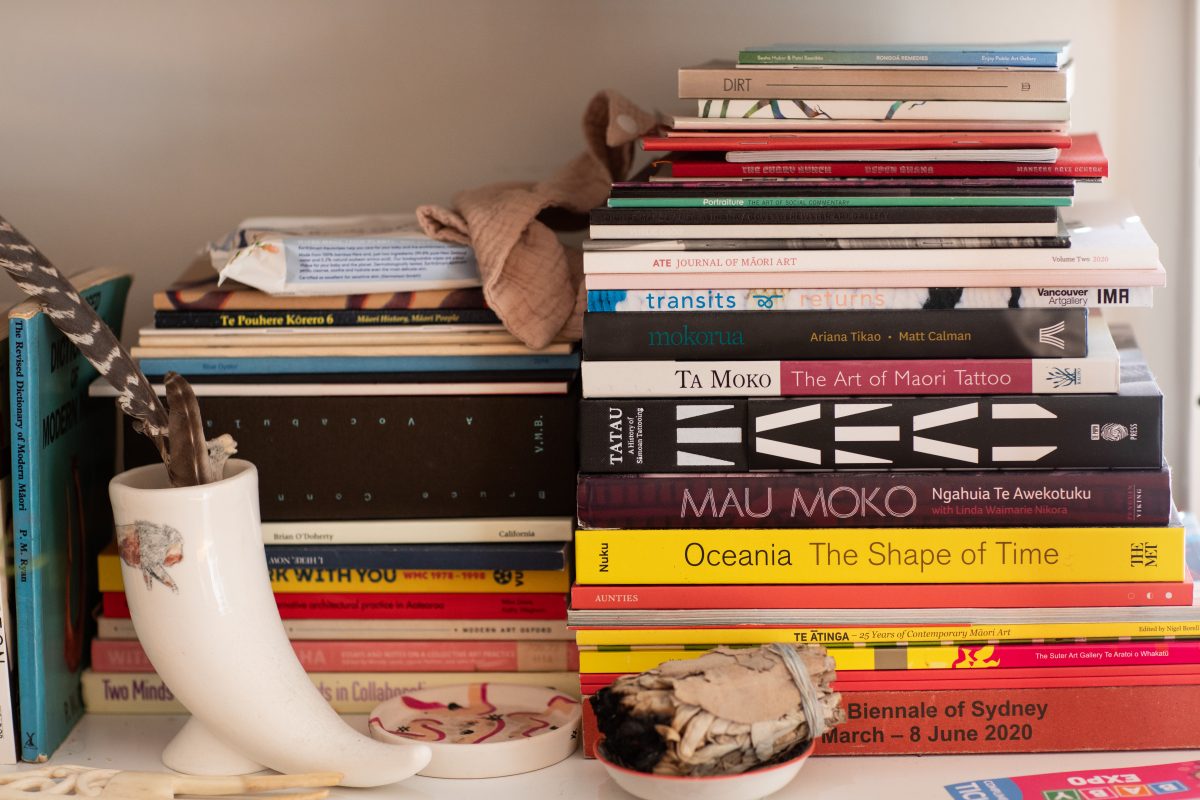
“As Māori, we know that everything is interconnected,” architect and new mother Elisapeta Heta at her home in Tāmaki Auckland. Image: Sara Tautuku Orme.
Building with Kaupapa Māori Design for Generations to Come
A connection between the land and the built environment has been around since Māori first settled in Aotearoa and began building traditional wooden structures for their communities. However, colonialism forced changes to traditionally sustainable building methods through building regulations. An Historical Māori Housing Report documents a Māori meeting house project in Rotorua that required construction to comply with building codes concerning hygiene and safety. These ranged from multiple exit routes, electric lighting, opening windows, non-flammable cladding materials, permanent foundations and replacing the traditional and sustainable material of thatch with weatherboard, iron and tiles.
For Māori communities requiring housing on their whenua and whose traditional building methods were made illegal through building regulations, Jade states that not building isn’t an option. “This can be conflicting for our Māori communities because we’ve been alienated from our whenua, and our way of developing low-impact housing has been prohibited for a long time, so we don’t do it anymore and haven’t had the chance to evolve it into modern forms. Because of this, for Māori, we actually need to build more.”
All three architects work primarily on projects for Māori clients, which is a privilege and a challenge for multiple reasons. Wider structural issues and the legacy of colonial injustice, which includes limited access to funding, have left many Māori with small plots of land in isolated pockets that are poorly serviced by infrastructure such as public transport, schools and supermarkets. Jade, who works with mana whenua to build papakāinga (housing on ancestral Māori land) in Te Tai Tokerau (Northland), says, “What’s left is often marginal and difficult to develop.” This land, much of it rural, might have flooding or other hazards be steep, landlocked and inaccessible from the road. Papakāinga is a base for residential housing, and might include a meeting house and shared gardens.
The mana whenua (Māori who descend from that area) communities that Jade works with want to live back on their land. At the same time, they want to build sustainable, long-term housing that will endure in terms of architectural design and building materials; “they don’t want to have a negative environmental impact.”
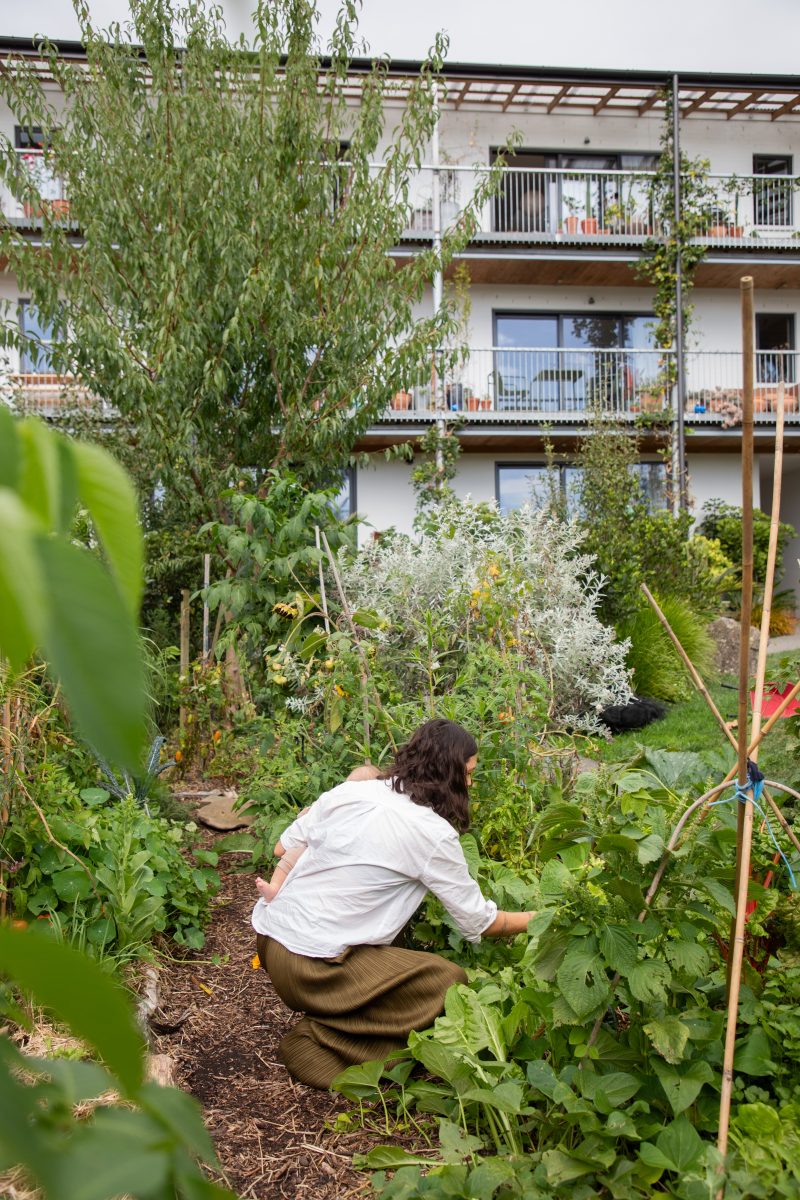
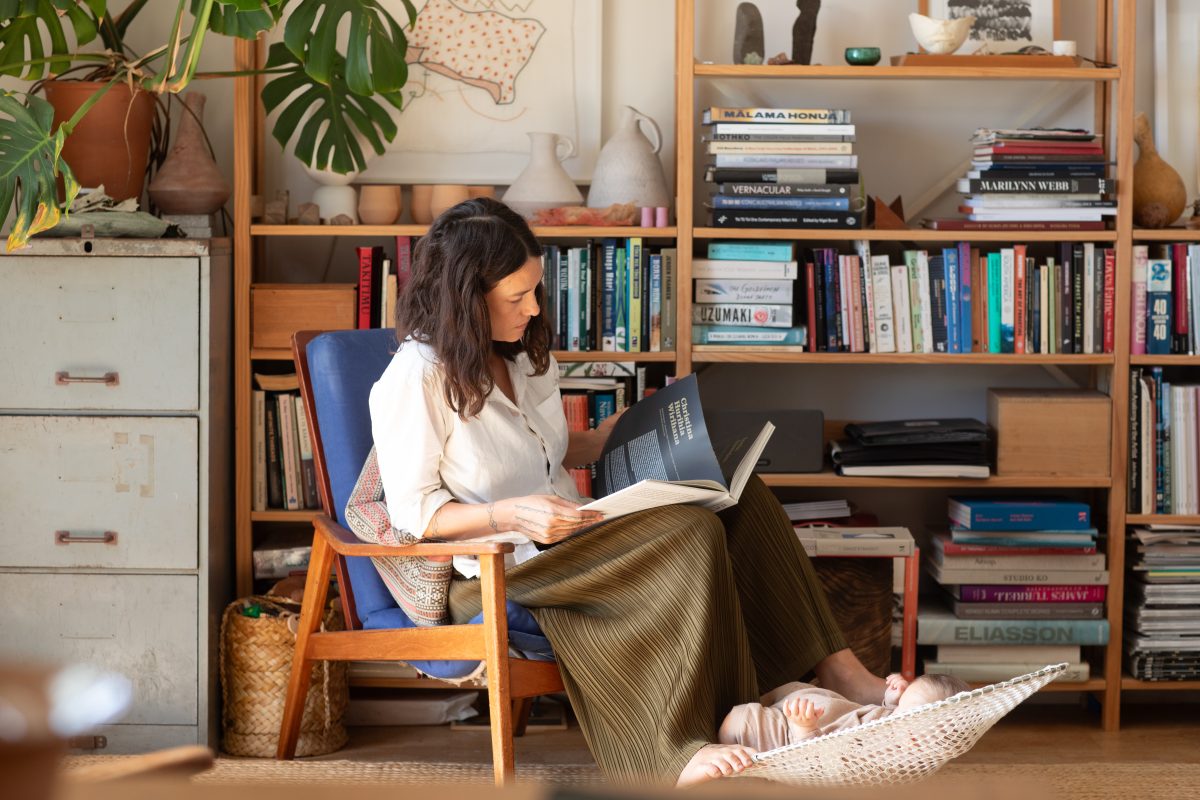
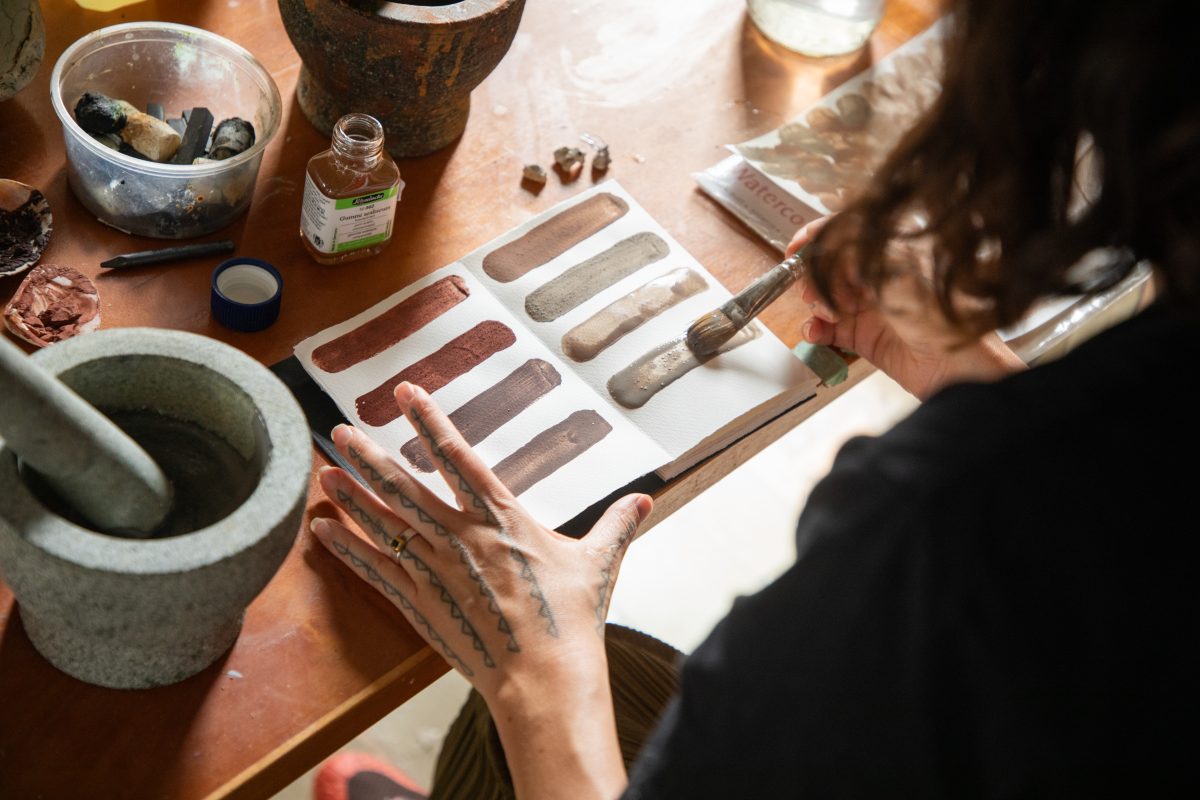
The home and studio life of Raukura Turei, a multi-disciplinary artist, architect and designer residing in Tāmaki Auckland. Image: Sara Tautuku Orme.
Raukura Turei is part of a Monk McKenzie papakāinga project exemplifying an interconnected approach. Te Mauri Paihere ki Mangakootukutuku is a partnership between Te Kiingi Tuheitia Pootatau Te Wherowhero VII, the iwi of Waikato-Tainui, Kāinga Ora, and Ara Poutama Aotearoa, the Department of Corrections; it is due to be completed in 2025. Forty-seven new one- and two-storey state homes will be built on the whenua for individuals and families on the Housing Register, with most expected to have iwi or whānau ties to the region. Sixteen homes will be for wāhine Māori who have left prison, and three will be accessible for kaumātua (elderly). The homes will be low maintenance, insulated, and double-glazed, with carpets and curtains.
There will also be a shared māra kai (food garden), orchards, pā harakeke and other native plantings, stream care and natural play elements for tamariki (children), including stepping and balancing logs using native timber from the site, developed as a hūpara (traditional Māori playground). Māori traditionally lived communally in family-based villages, so shared spaces like food gardens and play areas are often fundamental to such projects.
Raukura, who has been working on the project, notes, “From a climate resilience point of view, what we’re trying to deliver ultimately is healthy housing for whānau while also lifting the bar as to what Kāinga Ora can deliver with a Kaupapa Māori lens.” Challenges for Raukura have been balancing the needs of parties and stakeholders, from Kaupapa Māori practices to building regulations and Kāinga Ora guidelines, and racism and nimbyism at local public development meetings.
In the ongoing Jasmax project Te Puna Hapori – a police hub and courthouse, with Rangahaua Marae already in the northern corner – the whakapapa of the Whanganui awa (river) is centred through orangatanga (sustained wellbeing) and a focus on the resilience of the whenua, community and Te Taiao, the natural world. Elisapeta elaborates: “As Māori, we know that everything is interconnected. It’s one thing to focus on how water is treated on the site and collect power and materials, but if the community using the building lives in abject poverty and isn’t connected to that land, we don’t achieve lasting change.”
Matakohe, Jade’s firm, is frequently brought in as a consultant for larger architectural firms or entities working with big clients. The larger firm often holds the project budget and final decision-making on institutional projects, creating a power imbalance that can cause tension when advocating for mana whenua. What makes it all worth it for Jade is engaging with mana whenua so the local architectural design can connect with them and tell their stories.
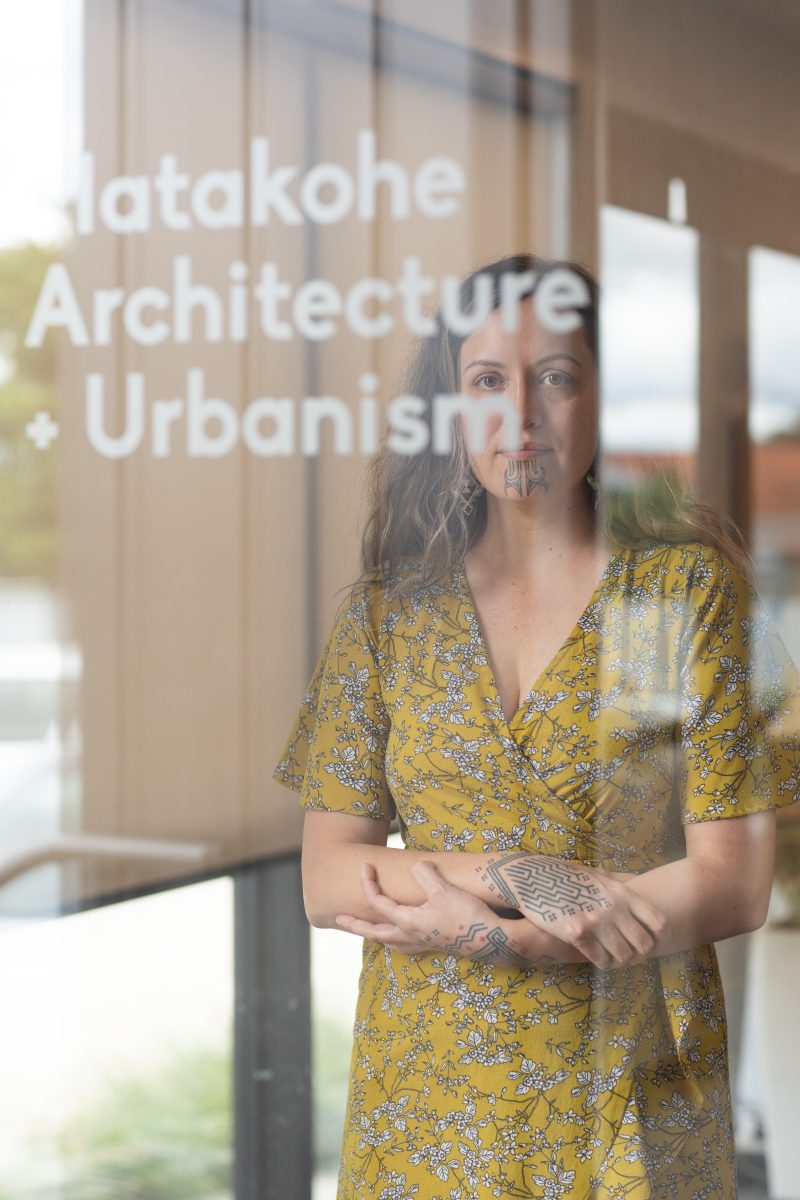
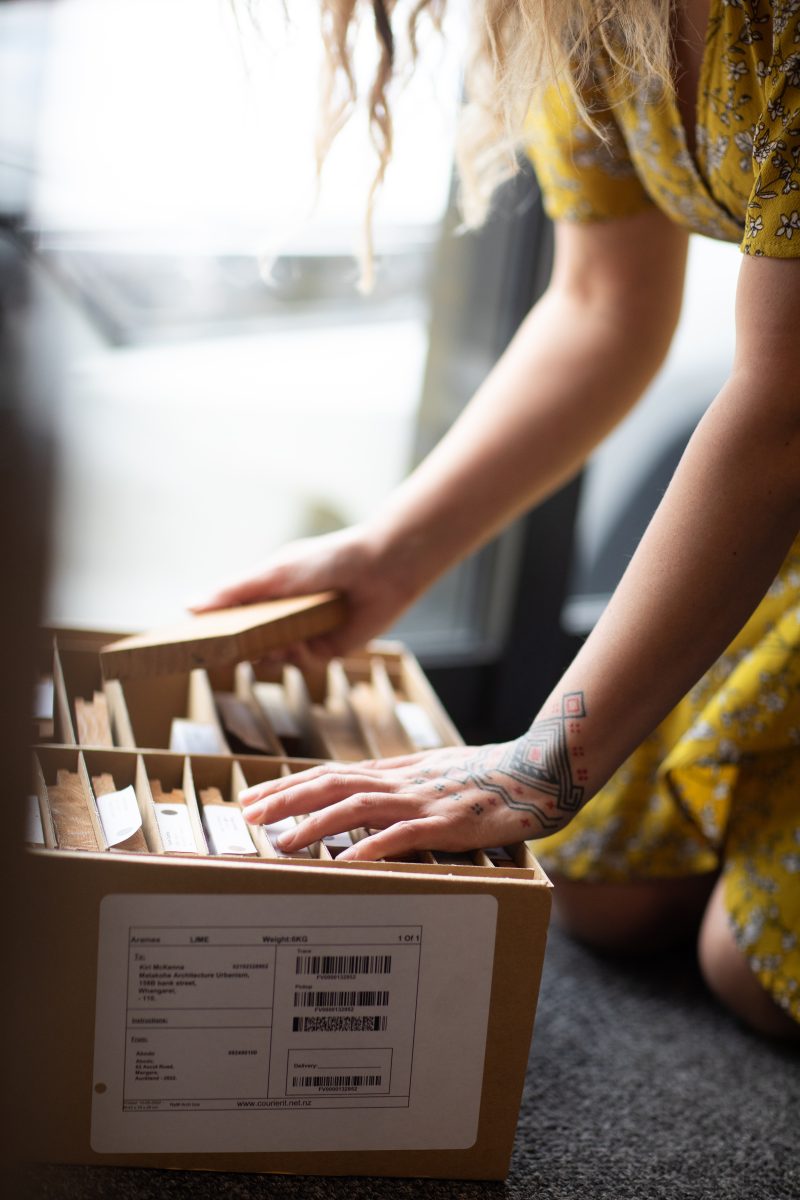
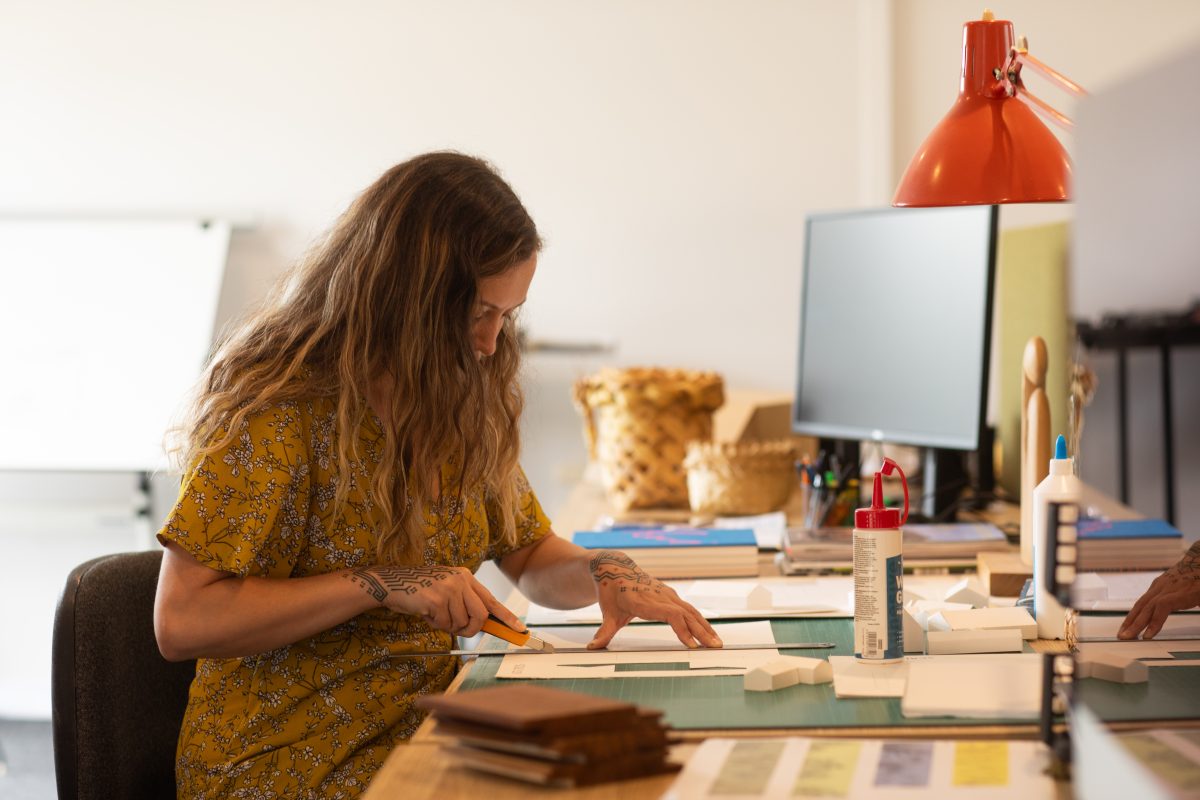
“Often the most sustainable and environmentally responsible choice is not a building at all… we should be building less and better,” Jade Kake from the Matakohe studio in Whangārei. Image: Sara Tautuku Orme.
Māori projects for tribal and community groups often rely on funding to proceed, which fluctuates and can be reduced or removed. Jade discusses the costing process: “You might advocate for building products that create the best environmental outcome, but it’s not doable within the budget, and the client swaps it out.” Raukura shares that these decisions are often made at the expense of cultural and environmental outcomes that are deeply important to the Māori communities the projects are for.
“I think about our young people, who don’t need to feel like strangers in their own town. Physical representation in local buildings can be an anchor or point of connection to their own whakapapa and stories. It’s an opportunity to embed that.”
“During the master-planning phase, we’ve got to consider the connection to Te Taiao (the natural environment) and the whenua. For example, while the awa of Waikato could present a flooding issue, it is also tūpuna (ancestors) of great spiritual importance. These connective qualities are paramount. How do we hold onto all those intangible qualities, such as wairuatanga and tikanga, that are otherwise overlooked?”
Jade and her team have been heading up marae (Māori meeting ground) redevelopment projects for a number of rural marae across Te Tai Tokerau, some of which were badly affected during Cyclone Gabrielle in 2023. The marae may be located in low-lying areas near rivers or in flood plains; others are higher up but become an isolated island in a flooding event. As part of these projects, the team needs to consider raising the buildings off the land, connecting them to sewage and, in preparation for a climate event, having space for helicopters to land and backup generators, because the local community may gather at the marae as climate refugees.
Systemic Challenges to Kaupapa Māori Design in Aotearoa
The 2023 change in government from a centre-left to a centre-right, three-party coalition between the National Party, ACT Party and New Zealand First has arrested the momentum of many architectural projects. Elisapeta cites the repeal of legislation to upgrade local council water infrastructure as an example. Further complicating matters, Aotearoa has been experiencing a housing crisis, with over 100,000 people experiencing homelessness in 2023.
From a housing perspective, the increased densification of land with existing hazards provides shelter for more families while decreasing climate resilience. Jade goes further: “The housing crisis almost goes against building sustainably. There is this push to build cheaper and at lower costs so you can house more people.” Compartmentalising the different aspects of a systemic issue, from people to climate to housing to hazards, highlights how they create tension and even undermine each other.

Collaboration with Other Indigenous Peoples
An exciting learning space for Māori architects is with other Indigenous groups worldwide. Elisapeta, Jade and Raukura each attended the International Indigenous Architecture and Design Symposium in Ottawa, Canada, in 2017, which Jade said was about planting seeds and growing informal relationships with other Indigenous architects. Elisapeta is a co-director of the International Union of Architects Indigenous Peoples Work Programme (UIA IPWP), where she speaks and engages in regular kōrero (conversation) with our Indigenous friends in mainland Australia and Turtle Island.
A positive outcome of her work was meeting with the design department at the County of Los Angeles to discuss the writing of a land acknowledgement policy, developed in collaboration with leaders of local tribes and enacted in November 2022. At a conference only a few years earlier, it was conferred that there were “no Indigenous people in the Los Angeles area”. Of course, this was patently untrue, making the policy a monumental achievement for the rights of Indigenous peoples in that area.
A Collective Awakening
To move from compartmentalisation to connection, a mātauranga Māori (Māori knowledge) perspective brings the land and life together instead of separating them. Raukura explains, “Our tūpuna have known this whenua for over a thousand years. This deep understanding of place holds more knowledge about how we can be kaitiaki in Aotearoa than anything I’ve learned at university or seen come from modern technology.”
Kaitiakitanga (guardianship) challenges us to embrace and care for our connection to the natural world and all its living creatures in the search for solutions to our future human challenges, including climate change. Our collective awakening to the potential of Indigenous architectural design processes as a response to climate change is just beginning, and we are fortunate to have wāhine Māori Elisapeta, Jade and Raukura to champion kaitiakitanga in their architectural and design practice. In listening to, acknowledging and implementing the knowledge systems of Indigenous peoples, we draw on the wisdom of the past to build an interconnected future for all.
- Jasmax is a third-generation architecture and design practice in Aotearoa with a strong focus on bicultural and sustainable design
- Matakohe Architecture + Urbanism is a community design practice in Te Tai Tokerau (Northland) that supports Māori communities and organisations to progress their marae (meeting house) papakāinga (housing on Māori land) and whenua development projects.
- Monk Mackenzie is an Auckland-based studio of architects and designers established to provide clients with elegant, sculptural and poetic solutions to complex briefs.
- Te Awa Tupua Act 2017 confers a legal personality on the Whanganui River. A legal person is an entity with the same rights and responsibilities as a person.

